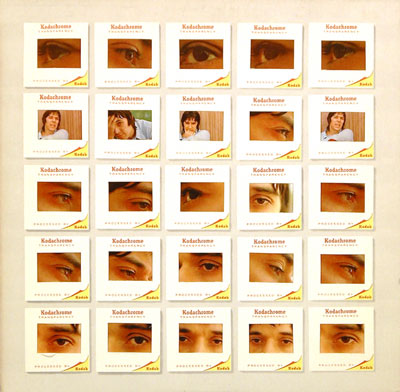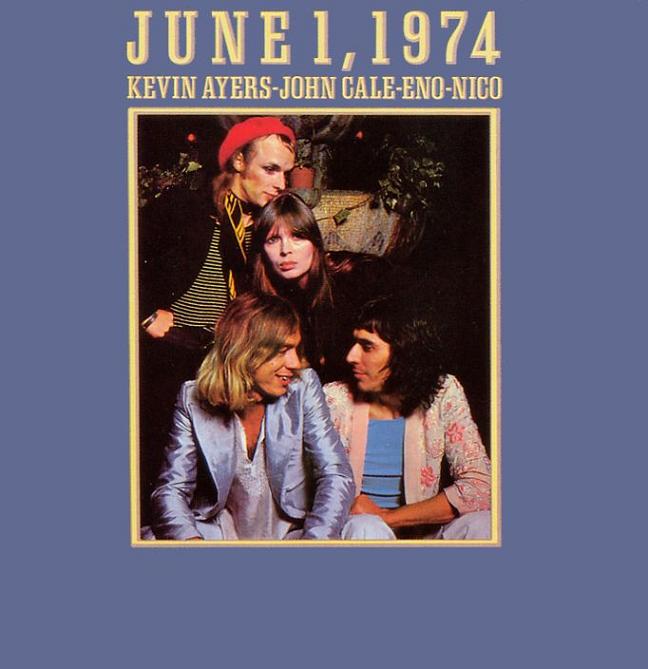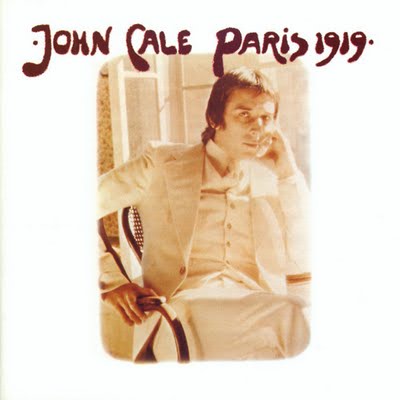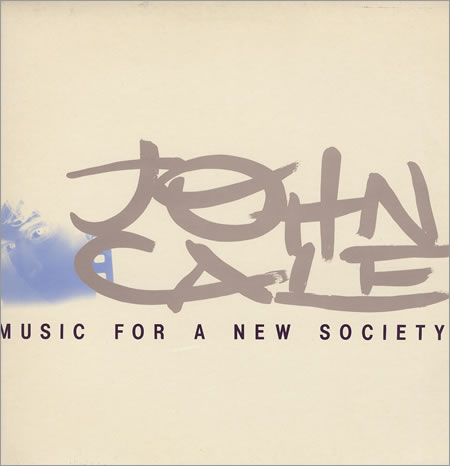John Cale rarely leaves our thoughts, if truth be told. But in recent months he’s been a little more present than usual.
The reason? He’s playing London’s Field Day festival on August 6, performing songs from his classic album Paris 1919 and hopefully some other highlights from a career that has seen him pass through the ranks of The Dream Syndicate and The Velvet Underground and work with the likes of Brian Eno, Patti Smith, The Stooges, Terry Riley and John Cage.
You can read more about Cale and his Field Day appearance here; below, Kiran Sande picks out his 10 favourite albums from the Cale catalogue.
JOHN CALE
INSIDE THE DREAM SYNDICATE, VOL.II: DREAM INTERPRETATION
(TABLE OF THE ELEMENTS, 2001)
Abandoning his classical education, John Cale landed an apprenticeship with Xiannis Xenakis and worked with John Cage before falling into the orbit of West Coast drone magus and purveyor of profoundly psychedelic”holy minimalism” La Monte Young. Cale would subsequently use Young’s ideas to radicalise the trad-rock ‘n roll chassis of The Velvet Underground, but it’s worth sampling them untempered in the what few available recordings there are of The Theatre Of Eternal Music (aka The Dream Syndicate), the Young-helmed collective that also featured Tony Conrad, Angus Maclise and Marian Zazeela. “What I had learned first about John Cale was that he had written a piece which pushed a piano down a mine shaft,” Conrad recalls. “We [the TOEM] hungered for music almost seething beyond control – or even something just beyond music, a violent feeling of soaring unstoppably, powered by immense angular machines across abrupt and torrential seas of pounding blood.” A good introduction to this “something just beyond music” is Day of Niagara – a single half-hour piece recorded by Young, Cale, Maclise, Conrad and Zazeela in 1965 and available only as a bootleg, Table Of The Elements released the definitive edition in 2000, prompting threats of legal action from La Monte Young. But for your most satisfying dose of Cale the pre-VU minimalist, check the same label’s Dream Interpretation, a collection of six mid-60s solo pieces sourced from the tape collection of Tony Conrad. For me it’s the best of the three albums anthologising Cale during his Dream Syndicate tenure, the others being Sun Blindness Music and Stainless Gamelan.
THE VELVET UNDERGROUND & NICO
THE VELVET UNDERGROUND & NICO
(VERVE, 1967)
Though clearly shaped and styled by the conceptual nous of Andy Warhol, and driven by the vocals of Nico (inscrutable, exquisitely flat) and Lou Reed (alternately street-tough and lullabying), it’s really Cale’s acidic viola drones that transform this record from rock ‘n roll pose into avant-pop milestone – on ‘Venus In Furs’ they feel every bit as punitive as the whip-cracks Reed’s lyrics describe. From Ferry to Bowie, Sonic Youth to Sandwell District, what self-respecting artist out there can claim not to have been influenced by this record? It remains the very cornerstone of art-rock mythology, synonymous with downtown, leather-clad, opiate-munching cool. But for Cale, the band’s dead-eyed style performed an important practical function too: “The only reason we wore sunglasses onstage was because we couldn’t stand the sight of the audience.”
THE VELVET UNDERGROUND
WHITE LIGHT / WHITE HEAT
(VERVE, 1968)
The Velvet Underground’s second album was recorded after the band’s acrimonious split from Andy Warhol. Nico had already been been given the boot, and Cale himself would be ousted from the band shortly after the record’s chaotic, substance-addled sessions were completed. Decay, discord, drugs, dissolution: it’s all audible in White Light/White Heat‘s six brutally stereo-split tracks, recorded in just two days at New York’s Scepter Studios under the stewardship of Tom Wilson. Cale has described it as “a very rabid record…consciously anti-beauty”, and that’s certainly the case with the album’s most memorable cuts: the ragged proto-punk workout ‘I Heard Her Call My Name’ and 17-minute, gnashing three-chord death-jam ‘Sister Ray’. Still, White Light/White Heat is not without its playful moments – just listen to ‘The Gift’, which features Cale reading a surreally macabre Reed short story about a man mailing himself to his beloved.
NICO
THE MARBLE INDEX
(ELEKTRA, 1969)
Historically Cale is a remarkably sympathetic producer and arranger, his work for other artists (The Stooges, Patti Smith, Modern Lovers and so on) notable for its lightness of touch; he isn’t one to impose his own “sound” on his charges, instead happy to treat his role as that of enabler. “I love helping someone achieve his goals,” the Welshman would later reflect, sounding distinctly Eno-like, before adding, a tad grandiosely, “I always try to approach it from the point of view, ‘What would a Zen master do in these circumstances?’ And that is not to give the artist a direct answer to all his questions, but to suggest a solution by other means.” The solution Cale prescribed Nico for her sophomore album, The Marble Index, turned what was always going to be a fine album – Nico having found her true, troubled writing voice, with digressive lyrics attending to motherhood, mortality, Richard Nixon and peyote tripping with Jim Morrison – into a fierce, filigreed masterpiece. Having contributed to the German beauty’s polite solo debut Chelsea Girl, Cale took a more central role in the conception and execution of The Marble Index, and though he didn’t produce it – that duty fell to Frazier Mohawk – he arranged it and played virtually all the instruments (electric viola, piano, bass, electric guitar, glockenspiel, bells, mouth organ and bosun’s pipe). The settings he creates for Nico’s voice and harmonium treads confidently the thin line between lavish, neo-classical grandeur and ascetic, atonal minimalism, a very European sound that anticipates Bowie’s Low, Joy Division and, well, pretty much the entire goth movement.
JOHN CALE
THE ACADEMY IN PERIL
(REPRISE, 1972)
Tempting though it is to include Cale’s Terry Riley collaboration, Church Of Anthrax, it’s rather less convincing and coherent to my ears than the follow-up, The Academy In Peril. Recorded in 1972, this instrumental suite it makes explicit the link between the classical minimalism of Cale’s pre-Velvets work and the pastoral pop that he will essay on his later solo work, particularly the following year’s Paris 1919. While Church of Anthrax sounded rather cluttered, with no real musical empathy between Cale and Riley, The Academy is a crisp and clear statement, opening with the chamber country stomp of ‘The Philosopher’, and going on to place high-minded compositions like ‘3 Orchestral Pieces’ alongside such disarmingly jolly jaunts as ‘Days Of Steam’ (which anticipates the romantic nostalgia of ‘Child’s Christmas In Wales’).
KEVIN AYERS-JOHN CALE-ENO-NICO
JUNE 1, 1974
(ISLAND, 1974)
One of the all-time great concert albums, June 1, 1974 captured a one-off group performance from Kevin Ayers, John Cale, Brian Eno and Nico at The Rainbow Theatre in Finsbury Park, London. Joined by guest musicians including Robert Wyatt and Mike Oldfield, the four principals each took turns to occupy centre-stage, thoughts its Ayers that dominated with renditions of four of his own songs taking up the LP’s entire second side. Eno opens proceedings with his own ‘Driving Me Backwards’ and ‘Baby’s On Fire’, before Cale steps up to sing lead on a cover of ‘Heartbreak Hotel’ and Nico gives her harrowing interpretation of The Doors’ ‘The End’. Though on paper Cale’s contributions to June 1, 1974 might seem fairly slight – vocals on ‘Heartbreak Hotel’, piano on ‘Baby’s On Fire’, viola on ‘Driving Me Backwards’ and Ayers’ ‘Two Goes Into Four’ – his presence is strongly felt. Like Eno, Cale is an artist whose studio proficiency was more than matched by an ability to deliver the goods in front of an audience, without the luxury of second takes and overdubs. As a document of not just one, but four visionary musicians playing together at their creative peaks, it’s unlikely that June 1, 1974 will ever be surpassed.
JOHN CALE
PARIS 1919
(REPRISE, 1973)
For an artist so accustomed to moving forward, it’s perhaps ironic that his strongest, most-loved solo album is very much about looking back. This is probably Cale’s most conventional set of songs, but also the most elegantly written and arranged, the Welshman appearing to revel in nostalgia for his not entirely happy early life in the mining village of Garnant, Carmarthenshire. Backed up by musicians pulled from the ranks of Lowell George’s Little Feat, he gives faux-naive songs like ‘A Child’s Christmas In Wales’, ‘Andalucia’ and the majestic ‘Hanky Panky Nohow’ a near-symphonic architecture. There are darker entries, like ‘The Endless Plain Of Fortune’, a gripping synthesis of existential dolor and orchestral pomp that’s comparable with the best of Scott Walker; in the main, though, this album is about romance and rebirth, not confrontation, nor anguish. ‘Macbeth’ is glam, garish roadhouse rock ‘n roll and, were it not for its elliptical lyrics, one could easily believe the brisk, bright title track to have come from the pen of McCartney, Jeff Lynne or even Elton John. How this profoundly warm and accessible record didn’t make more of a commercial impact remains a mystery; we really couldn’t be further away from the “consciously anti-beauty” White Light / White Heat.
JOHN CALE
FEAR
(ISLAND, 1974)
Fear commenced Cale’s Island trilogy, three albums released on the label in the space of two years, during which time he also produced Patti Smith’s Horses and Squeeze‘s self-titled debut. It isn’t quite as soft-hearted or expansive as Paris 1919, but not is it any kind of retreat: Cale has never sounded so assured or focussed. Roxy Music’s Eno, Andy Mackay and Phil Manzera all lend a hand, and sure enough the album is occasionally Roxy-esque, nowhere more so than on ‘Fear Is A Man’s Best Friend’, its stunning opener, Cale suggesting that “Life and death are just things that you do when you’re bored” over galloping music-hall piano and Manzanera’s compactly funky licks. ‘Buffalo Ballet’ is pseudo-country balladeering par excellence, Cale’s newly mature baritone beautifully framed by the gospel-leaning harmonies of The Chanter Sisters; the same ingredients are used to slightly more haunting, less twangy effect on ‘Emily’. There are a couple of macho rock workouts – the incendiary ‘Gun’ and ‘Momamma Scuba’ – but the songs that stay with you are the more winsome numbers. ‘You Know More Than I Know’ breaks my heart.
JOHN CALE
MUSIC FOR A NEW SOCIETY
(ZE, 1982)
It would be wrong to call Music For A New Society John Cale’s cocaine album – I mean, pretty much any John Cale album released in the 70s and 80s could justly be called John Cale’s cocaine album – but it’s certainly the one that sounds the most ravaged by the effects of long-term abuse; it’s listless, world-weary, hollowed-out. It certainly stands in stark contrast to the giddy maximalism of his early 70s peak, carrying out the about-turn hinted at by 1975’s Helen Of Troy, which concluded the Island trilogy. Cale’s lyrics here (including a couple of co-writes with playwright Sam Shepard) are rather opaque, but it doesn’t take a professor of poetry to grasp the essential message: everything is fucked. Of course it isn’t an easy listen, but there are some terrific songs, particularly the bagpipe and echo-enhanced ‘(I Keep A) Close Watch’, and some incredible atmospheres, especially ‘In The Library Force’, with its whooshing electronics and buffeting industrial noise.
JOHN CALE
WORDS FOR THE DYING
(OPAL/WARNER, 1989)
Arguably the last great album John Cale recorded, Words For The Dying has at its heart The Falklands Suite, Cale’s baroque if heartfelt response to the Anglo-Argentinian War, which finds him setting the poems of his beloved Dylan Thomas to music. When building songs around another’s words, the results often sound forced, but Cale does a magnificent job of compressing Thomas’s lyricism into neat melodic phrases, themselves just components of a vast harmonic mega-structure scored for Russia’s Orchestra of Symphonic & Popular Music of Gostelradio. A project that could easily have collapsed under the weight of its own ambition – there’s even a Welsh children’s choir involved for christ’s sake – is instead a late masterpiece, thanks to Cale’s deep-seated compositional genius, and unobtrusive but resonant production from Brian Eno. Indeed the only track on which Eno obviously imposes himself is ‘The Soul Of Carmen Miranda’, a Cale original bobbing on a bed of oceanic ambience.
Kiran Sande







































